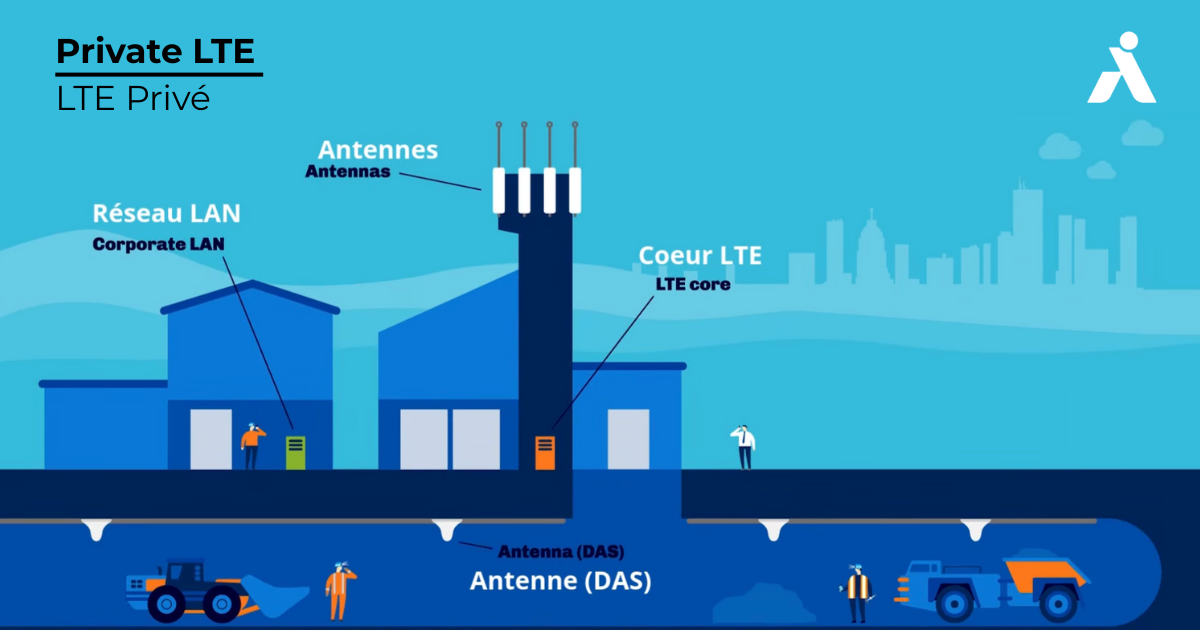In challenging industrial environments, connectivity is much more than just an asset: it is essential. However, when you depend on public, you are exposed to all its risks: breakdown, interference, network saturation… which can mean production interruptions, costly delays and, of course, increased risks in terms of worker safety. This is where Ambra stands out with its ultra-resilient private LTE/5G network architecture, designed to ensure rock-solid connectivity with no single point of failure. It’s no surprise that every major mining company is now looking into LTE (4G) and 5G technology!
An architecture tailored to the realities on the ground
Industrial environments and mines are often difficult to access and are subject to extreme environmental conditions. Their communication networks must handle huge amounts of data in real-time, which requires new solutions that guarantee uninterrupted connectivity. Wi-Fi was never designed for this, and today it is struggling to keep up. We now see several Wi-Fi vendors offering 5G components for mission critical applications. This is where LTE/5G networks come in. The ability for LTE/5G networks to provide Quality-of-Service while ensuring seamless handover across several radios is a must for several use cases. Moreover, LTE/5G allows industrial customers to securely separate IT and OT traffic to meet new cybersecurity standards. Finally, large industrial complex can be covered with fewer LTE/5G radios compared to Wi-FI reducing the cost of deployment and maintenance.
” “This is the most cost-effective and reliable solution for providing real-time coverage over several kilometers. For example, a single LTE radio can cover up to 6 km of underground tunnel in a mine, whereas it would take more than 60 active Wi-Fi access points to cover the same area,” explains Eric L’Heureux, Founder and CEO of Ambra Solutions.
Unlike Wi-Fi, LTE is based on a radio interface planned and supervised by the network, which allows for better spectral efficiency and handover.
Eric L’Heureux explains: “LTE/5G technology offers one of the best receive sensitivity. This means that even with a weak signal, we can obtain a high speed and a stable latency. ”
Why is the absence of points of failure crucial?
A point of failure in a network means that if there is a problem with a key device (server, router, antenna), the whole system can be affected. Our private network architecture is designed differently. Thanks to intelligent redundancy and optimized resource distribution, no single defective component can cause a general breakdown. Robust and adaptive, the LTE/5G infrastructure is resistant to dust, electromagnetic interference, vibration and difficult weather conditions, guaranteeing optimal operation 24/7.
Even in the event of a power outage in the region, our networks remain operational thanks to a battery power system, providing autonomy for 12 to 24 hours, offering often enough time to fix the issue. The result: : a network that is always available, even in the most extreme conditions.
Compromise-free mobility
Heavy machinery operators, autonomous vehicles and field teams need a stable and smooth connection, without dead zones or excessive latency. With Ambra’s private LTE/5G connectivity, mobility no longer means communication difficulties. Data flows smoothly throughout the site, enabling rapid decision-making and optimal use of resources.
How does Ambra guarantee maximum reliability?
-
- Distributed architecture: Unlike traditional infrastructures, where a single control point can be vulnerable, Ambra’s private LTE/5G networks are designed to operate in a decentralized manner. This means that if one element fails, the rest of the network automatically takes over without interruption.
-
- Redundancy and seamless switching in case of failure: Thanks to automatic recovery mechanisms, the Ambra network immediately detects any anomalies and switches to alternative connections in a matter of milliseconds, thus ensuring total continuity of service.
-
- Absolute security and control: Because the network is private, companies have total control over their infrastructure, without depending on third-party operators. Updates, monitoring and maintenance are managed proactively, guaranteeing optimal performance at all times.
A strategic asset for mission-critical industries
Ambra offers reliable, uninterrupted connectivity, whether it is for controlling driverless vehicles in a mine, managing logistics operations on an isolated site or real-time monitoring of industrial equipment and worker safety. A network with no single point of failure guarantees that all operations, workers and data remain connected, no matter the challenges in the field.


